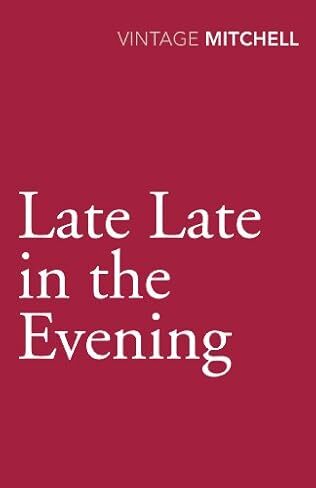Late, Late In The Evening

A review of Late, Late in the Evening by Gladys Mitchell – 250602
The fiftieth in Gladys Mitchell’s long-running Mrs Bradley series, originally published in 1976, sees this most obtuse of authors make some interesting changes to the format and style of her story. Firstly, she chooses to give her story an epistolary format in which Margaret Clifton and her psychiatrist sleuth, amongst others, provide their recollections of the strange events at the Oxfordshire village of Hill. Secondly, the story explores a case early in Mrs Bradley’s career when she was just plain Mrs Bradley and not her later grandiose incarnation, Dame Beatrice.
One of the distinct benefits of the epistolary format is that it eliminates most of the irksome traits of Mrs Bradley’s character which, usually, Mitchell is at pains to emphasise to the annoyance and frustration of this reader at least. At the time of the murders Margaret, and her younger brother, Kenneth, are aged ten and eight respectively and one of the remarkable features of the book is how the author is able to get into the character of a child and see the world and what is going on around them through the eyes of a child. Getting a fair deal on sweets, the ennui of Sunday school, and the need to pay lip service to the odd demands and strictures of adults feature large in their perspective.
Often novels that take the epistolary form feature short(ish) letters that allow the author not only to develop the story through a range of perspectives but also to move the narrative along at pace. Mitchell’s letters, though, seem over long and while this approach does allow the reader time to settle into the characters and examine the plot line, it does seem to deprive the story of much needed pace. It takes quite a while to get anywhere near the murders and even longer still for Mrs Bradley to roll her sleeves up and solve the mystery.
That all said, for an author whom I approach with no little trepidation this is one of her most accessible and charming novels. In essence, the plot follows a hackneyed path, an estate, an estranged long lost relative, Ward, (or so they say) who turns up out of the blue to lay claim to an estate entailed to the male line of the Kempson but who then allows himself to be bought off for a monthly retainer, somewhere to live, and a lump sum of £30,000 upon Mrs Kempson’s death, and then the increasingly erratic behaviour of Ward which leads to his own murder, amusingly buried in a grave he had dug himself, and that of a flibberty young thing, a guest at a party thrown by Amabel Kempson, while dressed in a dinosaur costume. Her costume was identical to that worn by Lionel, Mrs Kempson’s grandson and the intended main beneficiary of the estate. A case of mistaken identity, perhaps?
Added to the mix is a doctor who has got himself into an amatory muddle and on the night in question his actions are suspicious to say the least. With just two credible suspects Mitchell does well to keep the mystery alive, although the leisurely pace does help. I enjoyed the moments when the photographer’s story crashed into a drunken heap and when neither suspect has a credible alibi, the telling points are the remarkable change in behaviour in one of the protagonists and the thwarted ambitions of another.
The actual resolution seemed to me a little weak and unconvincing, but this was a Mitchell novel that I did not find too taxing and, dare I say it, quite enjoyable.



